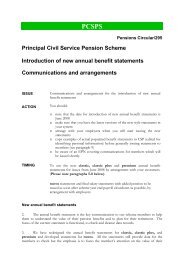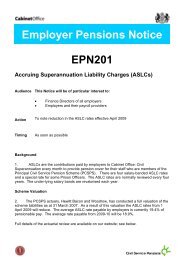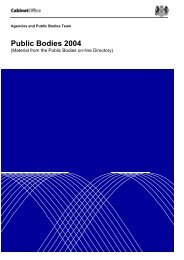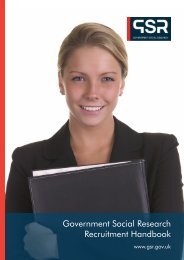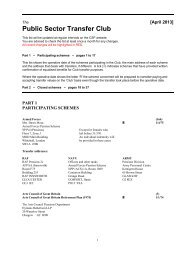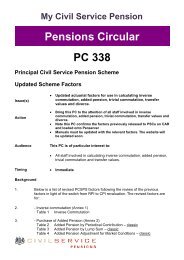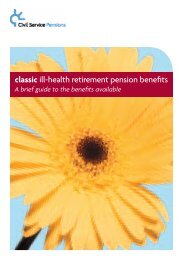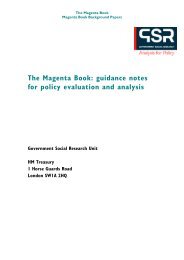Making Car Sharing and Car Clubs Work - Case ... - The Civil Service
Making Car Sharing and Car Clubs Work - Case ... - The Civil Service
Making Car Sharing and Car Clubs Work - Case ... - The Civil Service
You also want an ePaper? Increase the reach of your titles
YUMPU automatically turns print PDFs into web optimized ePapers that Google loves.
MAKING CAR SHARING AND CAR CLUBS WORKCASE STUDY SUMMARIES5 HEATHROW AIRPORTGeneral Background5.1 By 2000, travel planning initiatives were already underway at Heathrow Airport, mainlyconcentrated on improving <strong>and</strong> increasing bus services, with some success in attractingmore passengers on board. In September 2000, it was decided to spend more effort on carsharing. <strong>The</strong> main motivation was to reduce the number of staff travelling to work by car,driver alone, in order to manage predicted car parking pressure. But the catalyst was the fuelshortage that Autumn; a car share matching database received 20,000 visits during thecrisis. At the peak, car use declined by one third, but absenteeism was reported as no higherthan usual. Focus Groups carried out with staff in October 2002 indicated 47% acceptanceof the principle of car sharing. Airport <strong>Car</strong>share was formally launched on 23 April 2001.5.2 In order to get permission to build the new Heathrow terminal (T5),a planning condition wasaccepted that placed a cap on the amount of car parking, set at 42,000 parking spacesalthough the forecast dem<strong>and</strong> was for 45,000 spaces. In order to meet passengerrequirements <strong>and</strong> to comply with the ‘spirit’ of the cap which proposed a reduction inemployee car parking as opposed to passenger car parking, it is expected the 3,000difference will have to be dealt with by reducing the number of cars driven to the airport bypeople who work there. BAA Heathrow is acutely aware of the sensitivity of this issue <strong>and</strong>the necessity to keep Heathrow as an attractive centre of employment.5.3 <strong>The</strong> travel plan has recently been updated <strong>and</strong> refocused (see Changing Direction:Heathrow’s Travel Plan 2004 – 07). It is strongly oriented towards encouraging airportbusinesses to adopt the travel plan. BAA Heathrow can only do so much in isolation. Toachieve the level of modal shift required by the airport all businesses at Heathrow will haveto take some degree of responsibility for influencing the travel patterns of their employees.Consequently, the new travel plan focuses on the business case for the travel plan <strong>and</strong>urges all companies <strong>and</strong> employers at Heathrow to work together “for sustained businessgrowth”.Operating Structure5.4 Airport <strong>Car</strong>share is currently delivered on a closed internet-based system, using Intrinsicasoftware, which is available to all 70,000 employees working at Heathrow. An administratoris required to complete the matches. Although the original software was ‘off the shelf’, it hassubsequently been tailored to meet BAA’s requirements. <strong>The</strong>re has been further investmentin the Intrinsica software package: GIS mapping was introduced in the first half of 2004. Itwas felt by the team that the process of creating a match is quite labour intensive. It wasestimated that the process takes, on average, about an hour from meeting someone toregistering them <strong>and</strong> finding a match on the database.5.5 Delivery of the Travel Plan, <strong>and</strong> other transport planning services, is undertaken by theChanging Direction Team. This is lead by Heather McInroy, Head of Research <strong>and</strong> TravelManagement, whose Marketing <strong>and</strong> Communications Manager, Freda Jesudason, managesthe work of the Airport Commuter team. <strong>The</strong> latter consists of one Airport CommuterFinal V1.1, Dec. 2004 - 30 -




